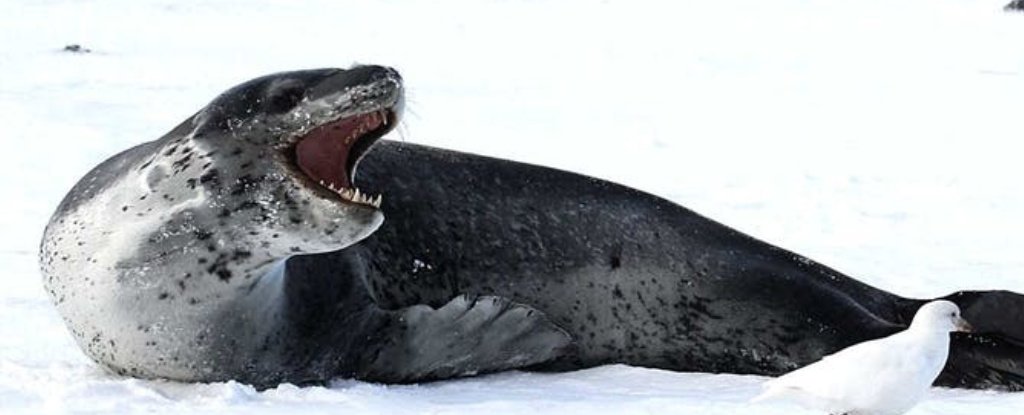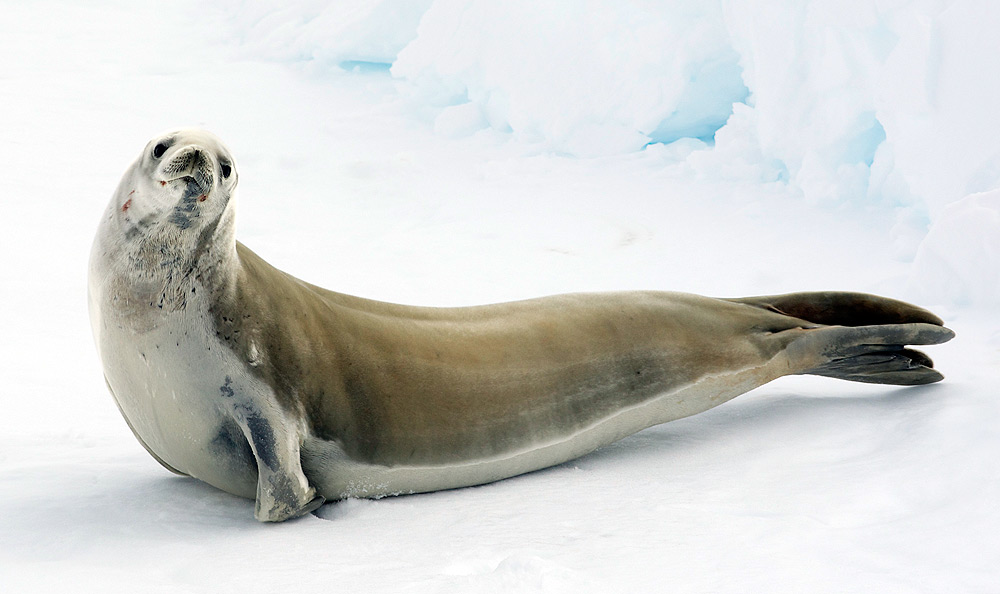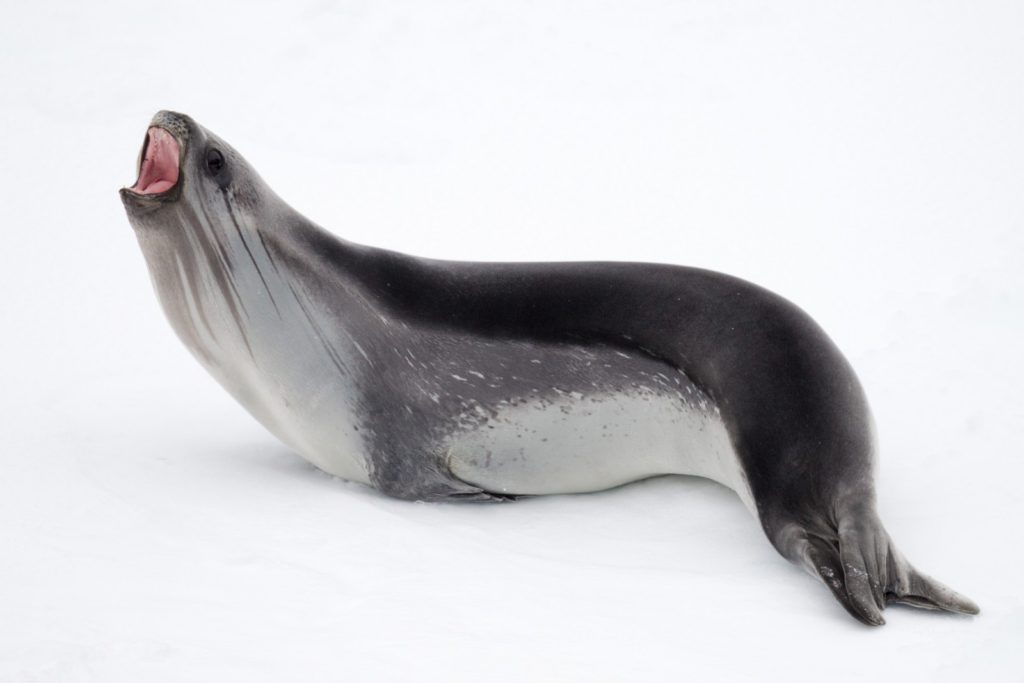Leopard Seal

The leopard seal (Hydrurga leptonyx), also referred to as the sea leopard, is the second largest species of seal in the Antarctic (after the southern elephant seal). Its only natural predator is the killer whale. It feeds on a wide range of prey including cephalopods, other pinnipeds, krill, birds and fish. It is the only species in the genus Hydrurga. Its closest relatives are the Ross seal, the crabeater seal and the Weddell seal, which together are known as the tribe of Lobodontini seals. The name hydrurga means “water worker” and leptonyx is the Greek for “small clawed”.
Crabeater Seal

The crabeater seal (Lobodon carcinophaga), also known as the krill-eater seal, is a true seal with a circumpolar distribution around the coast of Antarctica. They are medium- to large-sized (over 2 m in length), relatively slender and pale-colored, found primarily on the free-floating pack ice that extends seasonally out from the Antarctic coast, which they use as a platform for resting, mating, social aggregation and accessing their prey. They are by far the most abundant seal species in the world. While population estimates are uncertain, there are at least 7 million and possibly as many as 75 million individuals. This success of this species is due to its specialized predation on the abundant Antarctic krill of the Southern Ocean, for which it has uniquely adapted, sieve-like tooth structure. Indeed, its scientific name, translated as “lobe-toothed (lobodon) crab eater (carcinophaga)”, refers specifically to the finely lobed teeth adapted to filtering their small crustacean prey. Despite its name, crabeater seals do not eat crabs. As well as being an important krill predator, the crabeater seal is an important component of the diet of leopard seals (Hydrurga leptonyx), which are responsible for 80% of all crabeater pups deaths.
Ross Seal

The Ross seal (Ommatophoca Rossii) is a true seal (family Phocidae) with a range confined entirely to the pack ice of Antarctica. It is the only species of the genus Ommatophoca. First described during the Ross expedition in 1841, it is the smallest, least abundant and least well known of the Antarctic pinnipeds. Its distinctive features include disproportionately large eyes, whence its scientific name (Ommato- meaning “eye”, and phoca meaning “seal”), and complex, trilling and siren-like vocalizations. Ross seals are brachycephalic, as they have a short broad muzzle and have the shortest fur of any other seal.